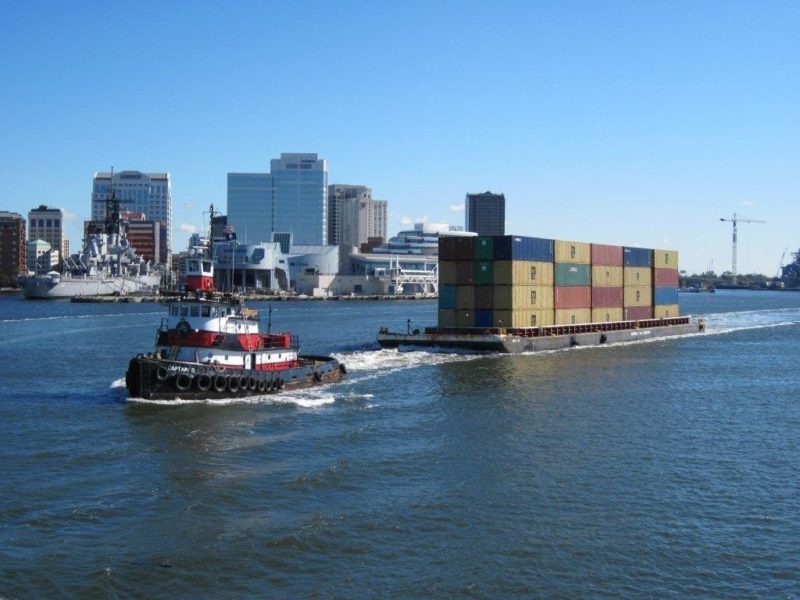New York City has a $100 million plan for a new freight distribution system that would build barge terminals in Brooklyn and at the Hunts Point wholesale food center in the Bronx, to bring food and consumer goods by water instead of roads.
Some 90% of goods sold in the city now arrive by truck – much of it carried just a few miles on the map, but take hours to deliver in traffic, from containership ports in New Jersey. That over-the-road freight volume is forecast to increase 68% by 2045, according to the New York Economic Development Corporation.
Maritime transport is the answer, along with reactivating underutilized rail lines and constructing new trans-loading facilities and passing lanes within the existing rights of way, EDC officials said Monday in announcing the plan. Dubbed Freight NYC, the plan includes a new barge terminal at the South Brooklyn Marine Terminal in Sunset Park, and calls for finding a private partner to build a new urban distribution center of at least 500,000 square feet at the nearby Brooklyn Army Terminal.
“A city with our robust waterways and railways shouldn’t be moving 90% of cargo by truck,” said Mark Chambers, director of the NYC Mayor’s Office of Sustainability. “With smart investment and good, well-paying jobs, Freight NYC will lift New York City’s economy while lowering traffic and pollution.”
The plan comes at a time when terminal and barge operators are looking at opportunities to expand short-sea shipping as an intermodal link between ports including Norfolk, Va., Philadelphia, New York and north to New England. Container-on-barge services are being marketed as a more efficient alternative to shipping by truck along the crowded I-95 corridor through the Northeast.
Capt. Eric Johansson, a professor of marine transportation and SUNY Distinguished Service professor, said the conference “is an opportunity for urban and regional planners, terminal operators, educational institutions and labor organizations to learn how to integrate marine highways into their policies and plans.”
The event will feature speakers from the EDC, American Maritime Partnership, McAllister Towing and Transportation Co. Inc., the U.S. Department of Transportation, Ports America, Tote Services, Crowley Maritime Corp., Norfolk Tug Company, Red Hood Container Terminal LLC, the Port Authority of New York and New Jersey, Harbor Harvest and others.
One of the U.S. Maritime Administration’s 25 designated marine highway routes includes New York, and the city with terminal operators is seeking to expand shipping through the Red Hook Container Terminal in Brooklyn.
Mike Stamatis, president and CEO of Red Hook Container Terminal, said the plan “provides tangible short-term investment in vital maritime and rail infrastructure. Red Hook Container Terminal proudly stands with the (city) administration and looks forward to joint efforts to activate the South Brooklyn Marine Terminal to create excellent jobs, connect the city to the global economy, reduce highway congestion and improve air quality.”
“We support the Freight NYC initiative, which would expand American-flag shipping. We are longtime backers of short-sea shipping and believe this project will help kick-start it. We’re especially excited about the potential for job growth in the U.S.-flag maritime sector,” said Joseph Soresi, vice president of the Seafarers International Union.




